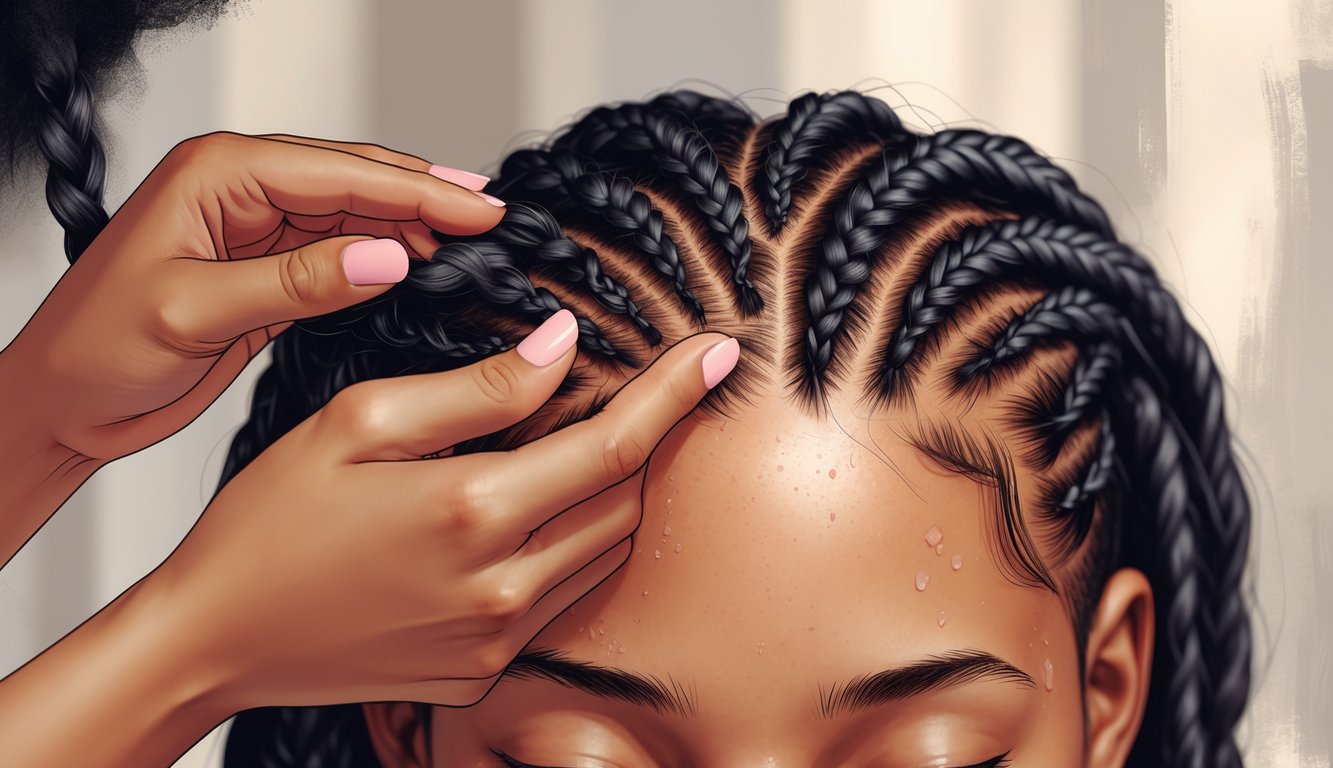
Empowering Your Braid Journey: Listening to Your Scalp
Honestly, what drives me nuts is how “protective styles” can totally mess up my routine because nobody gave me the real scalp warnings when I booked. Tight box braids seem like a low-maintenance win, but my scalp doesn’t care about trends or perfect parts. It’ll scream if I ignore it—and there’s no pause button once the burning starts.
Why Comfort Should Be Your Guide
Okay, so, look—I’m scratching my neck just thinking about it: why do people still buy those “itch relief” hair sprays and pretend pain is just part of the deal? I mean, I’d rather keep my twelve bucks and skip the whole “maybe I’ll get traction alopecia” roulette. Dermatologists, or at least the ones I’ve doomscrolled past, basically say if my scalp feels tight or sore for more than two days, that’s not “just how it is”—that’s damage already happening. Pain is literally the only way my scalp can yell at me.
One time, I read a review where some trichologist said even a tiny pinch could mean white bumps or—wait for it—actual hair loss. Not sure why nobody warns you that tension headaches from braids will have you avoiding mirrors. Feels like salons count on us keeping quiet, but let’s be real: if I let a stylist pull the “tight is neat” card, my poor follicles are the ones suffering. I’m over pretending. Now, if my head hurts, I grab a warm towel, soak my box braids, or pour some diluted apple cider vinegar on there—honestly, even just shining my phone flashlight at my scalp after does more for me than acting tough ever did. Check for yourself, it’s not rocket science.
Building Trust with Your Stylist
Here’s the thing that makes zero sense: why do we all stay quiet when braids hurt? Like, I’m paying for this, right? Isn’t the whole point “protective style,” not “regret and ibuprofen”? If I can’t say “hey, this is too tight,” what am I even paying for? Stylists who actually know what they’re doing keep telling me: speak up while they’re braiding, not after, because fixing it halfway is just easier and saves your edges.
Last time, I hesitated—my stylist gave me that “sleek or nothing” line. But then, some random customer piped up and told her story about losing hair patches. That woman saved my nape, seriously. Now I just text before I show up: “Hey, I want bigger parts, less tension, don’t snatch my edges.” Reviews everywhere say if a stylist ignores your pain, don’t go back. Does it always work? Not really. Sometimes they push back, but I keep telling myself this is about teamwork, not just looking cute for Instagram. Otherwise, what’s the point? Just pain in a pretty package.
Frequently Asked Questions
No joke, switching up hairstyles can ruin an entire weekend—like, suddenly I’m deep in a hair care emergency because I ignored my scalp for a couple days. Why does damage from box braids sneak up like that? Stylists miss the warning signs, clients skip aftercare, and everyone just keeps repeating the same “protective style” myths for months.
How can you tell if your braids are too tight and causing harm to the scalp?
So, back in the day, that weird pinching at my hairline? I thought it was normal. Turns out, Dr. Khadija Horton (I think it was Allure, May 2023?) says redness and bumps at the edges are giant red flags for traction alopecia. Sometimes you get that instant, sharp, bug-bite pain—if you know, you know.
But here’s the wild part: I met someone who thought those scalp bumps meant the style was “secure.” Uh, no. That’s just your scalp begging for mercy. All the guides and experts say if you feel throbbing, tingling, or see hair falling out at the part, your braids are way too tight. Ignore it, and you’re just stacking up damage. Not a flex. Just a warning.
What steps should one take if they experience scalp pain from tight braids?
I’ve literally yanked out a couple braids at 2 a.m.—not proud, but wow, instant relief. The stylists I actually trust always tell me: loosen the ones that hurt, especially around the edges. Forums swear by scalp massages with tea tree oil or aloe stuff—just skip the burning ointments. Why even sell those?
Why is it so embarrassing to admit your style flopped? Pride? Sunk cost? Real pros are clear: if pain sticks around, take the braids out. Don’t “wait and see.” My trichologist basically shouts this at me. Sometimes people say take an NSAID if it’s swollen, but mostly, your stylist wants you to call, not just ghost them and suffer.
Are there long-term effects of wearing braids too tightly?
Scrolling Instagram, I saw before-and-after shots—bald spots on a woman’s temples after a few too-tight installs. Freaked me out, not gonna lie. Dermatologists have fancy names, but everyone knows traction alopecia means hair loss from tension, and it can take forever—if ever—to grow back, especially if you’ve done this for years.
The worst part? Sometimes the hair just never comes back. Scar tissue blocks new growth, and all the hair vitamins in the world won’t fix it. Statistically, black women get hit hardest—Cleveland Clinic 2017, look it up if you want numbers.
What precautions can one adopt to avoid scalp damage when getting box braids?
Honestly, I still haven’t figured out how to say “loosen up” without getting side-eye. My trick: always book a consultation, even if rushed salons hate it. Good stylists swear by sulfate-free shampoo, prepping with leave-in conditioner, and skipping micro-braids on thin spots.
Weirdly enough, a mid-install wash helps. One Harlem stylist swears by a light scalp cleanse every couple weeks. And, no, dunking your head in a pool doesn’t count—chlorine is a whole separate disaster.
How often should braids be loosened or redone to prevent scalp damage?
Salons push “long-lasting” like it’s a good thing—six to eight weeks, they say. But honestly, leave them in longer than two months and you’re just asking for breakage and “shedding clumps” (actual trichologist words). People forget your hair keeps growing underneath, making the base tighter every week.
Last time, I left mine in for ten weeks—bad idea. Itching, white bulbs at my roots, the whole mess. If detangling feels like a gym session or your scalp looks like a snow globe, you waited too long. Letting your scalp “breathe” for a week between installs? Not just an old wives’ tale. It’s sanity.
Can certain hair types be more susceptible to damage from tight braiding?
Coarse, coily hair—yeah, like mine—always gets called “tough,” but honestly? It snaps just as fast as fine hair. I mean, who decided that myth? Some dermatologist (I think she was quoted in a 2022 review, but don’t quote me) said Type 3 and 4 hair gets yanked the most, especially around the edges. Meanwhile, my friends with straight, fine hair? They lose basically half their scalp in the shower and act like it’s normal. Confusing.
People never mention this: if your hair’s been relaxed or chemically lightened, tight braids are basically a dare to break it off. I’ve literally seen a totally natural 4C scalp recover from a wild braid job, but processed hair? Sometimes it just snaps mid-braid. It’s wild. And everyone’s obsessed with length, but honestly, density and elasticity? Way more important if you care about susceptibility to braid damage. Also, is there ever going to be a spray that actually prevents breakage? Because I haven’t found one.



